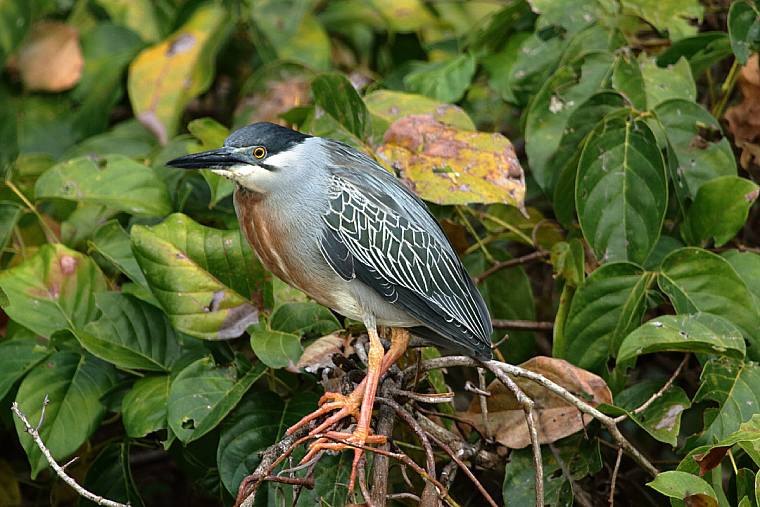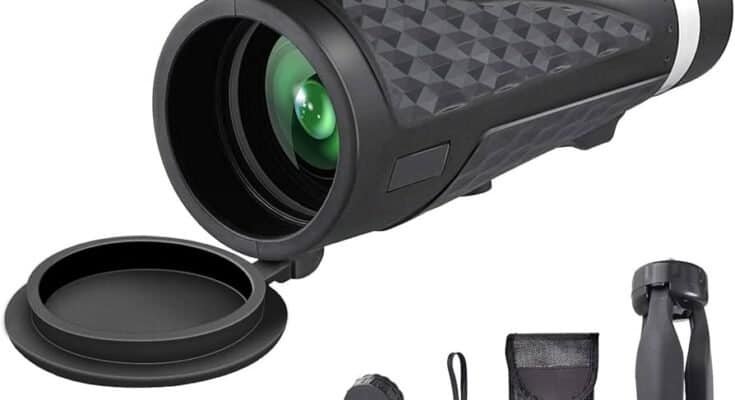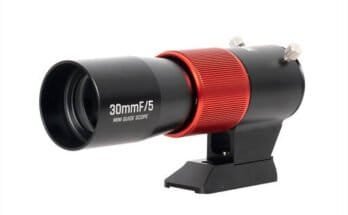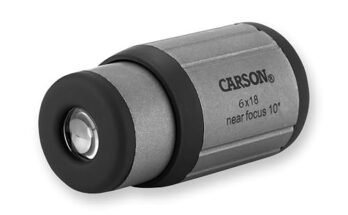I’ve spent years guiding dawn walks and testing optics in muddy marshes, windy cliffs, and crowded city parks. Here’s the straight answer you came for: yes, a monocular can be good for bird watching. It shines for quick looks, travel, and tight budgets. But it isn’t perfect for every birder or every bird. In this guide, I’ll break down how a monocular performs in the real world, when to choose it over binoculars, and how to pick the right one for your needs. If you’ve wondered “Is a monocular good for bird watching?” you’re in the right place.

What Is a Monocular and How It Compares to Binoculars
A monocular is a small, single-tube telescope you hold to one eye. It works like half a pair of binoculars. It uses lenses and prisms to enlarge distant subjects, like a warbler high in the canopy.
Compared to binoculars, a monocular is lighter, smaller, and often cheaper at the same optical quality. But binoculars use both eyes, which gives you a wider, more stable view and better depth perception. That can help you find birds faster in dense foliage.
Think of a monocular as your pocket-friendly spotter. Think of binoculars as your all-day, steady companion. Each tool fits a different style and situation.

Pros Of Using A Monocular For Bird Watching
From long hikes to fast city sightings, a monocular can be a joy to use. Here are the upsides I notice most in the field.
- Small and light: Easy to pocket or clip to a strap. You will carry it more, which means you will see more.
- Fast to deploy: One hand up, focus, and you’re on the bird. Great for quick flybys and urban birding.
- Budget friendly: Dollar for dollar, you can get sharper glass than many low-cost binoculars.
- Versatile: Useful for checking field marks, reading distant signs, or scanning shorebirds without unpacking gear.
- Discreet: Less attention in public spaces. Ideal for travel and beginners who want to keep things simple.
- Diopter simplicity: One optical channel means no fiddling to balance two barrels for your eyes.

Limitations And When Binoculars Win
A monocular is not the best choice for every birder. Here are the trade-offs to consider.
- Narrower field of view: Finding small, fast birds can take longer, especially in forests.
- Less stability: One-eyed viewing can feel shakier and more tiring during long scans.
- Reduced depth perception: Judging distance and tracking birds in flight is harder.
- Eye strain for long sessions: Many people prefer two-eyed viewing for comfort.
- Low-light performance: At the same size and price, binoculars often feel brighter and steadier at dawn and dusk.
If you plan long days, count on flight shots, or join surveys where speed matters, binoculars usually win.

Key Specs To Consider For Birding Monoculars
A few numbers make a big difference in the field. Here is how to read them and what I recommend.
- Magnification: 6x to 8x is best for most birders. It keeps the view steady and bright. 10x can work if your hands are steady or you use a support.
- Objective lens size: 25 to 36 mm balances light and size. Bigger lenses are brighter but bulkier.
- Field of view: Look for wide angles. It helps you find and follow birds faster.
- Eye relief: If you wear glasses, aim for 15 mm or more. You’ll see the full image without black rings.
- Prism type: Roof prisms keep the body slim. Porro prisms can look bulkier but sometimes offer better value.
- Coatings and glass: Fully multi-coated lenses and good prism coatings improve contrast and reduce glare.
- Close focus: Under 6 feet is great for butterflies, dragonflies, and feeder birds.
- Waterproof and fogproof: Sealed and nitrogen- or argon-purged units handle rain and temperature swings.
- Stabilization: Optical or digital stabilization helps at high magnifications but adds cost and weight.
Practical sweet spot: 8×32 or 8×36 monoculars are bright, steady, and still easy to carry.

Practical Tips From The Field
I learned these the hard way on windy cliffs and in mosquito-filled marshes. They make a real difference.
- Brace yourself: Tuck your elbow into your chest or lean on a tree to reduce shake.
- Scan first, zoom second: Find the bird with your naked eyes, then bring up the monocular.
- Use your other eye open: It helps your brain stabilize the scene and maintain awareness.
- Adjust the eyecup: Twist it out if you don’t wear glasses. Keep it in if you do.
- Clean smart: Use a blower and a microfiber cloth. Dirt on a small lens shows fast.
- Lanyard or clip: Keep it handy. Gear you can reach is gear you will use.
- Pair with a phone: A simple phone adapter turns a monocular into a tiny digiscoping rig.
One personal note: In city parks, I often carry a 6x or 7x monocular. It is light, quick, and less intrusive around crowds. I save 8x or 10x for open wetlands and raptor watching.

Best Use Cases And Scenarios
A monocular shines in some common birding moments. Here are the standouts.
- Travel and commuting: Slip it in a pocket and scan from a bus stop or balcony.
- Quick feeder checks: Great for backyard IDs without hauling out big gear.
- Long hikes: When weight matters, a monocular keeps you nimble.
- Urban birding: Discreet and fast for park walks and waterfront scans.
- Family trips: Easy for kids to use and less fragile than a full-size binocular.
- Secondary tool: Many birders carry a monocular as a backup or for quick reference while using a camera.
If you want one optic to do everything, binoculars still make sense. If you want something you will always carry, a monocular is hard to beat.

Budget And Value: What To Expect
Price influences performance, but smart choices go far. Here is how to think about value.
- Entry level: Affordable models can be sharp in the center. Expect some softness at the edges and a narrower view.
- Mid range: Better coatings, wider fields, and more durable builds. This is the sweet spot for most users.
- Premium: Top-tier glass, excellent control of glare, and superb low-light views. Consider if you bird daily or want the best for travel.
Avoid flashy zoom claims with very high magnification. They often trade stability and brightness for numbers on a box. A stable 8x often beats a shaky 12x or 15x in real life.
Frequently Asked Questions Of Is A Monocular Good For Bird Watching?
Is A Monocular Better Than Binoculars For Beginners?
For quick, casual birding, yes, a monocular can be easier. It is light, simple, and costs less. If you plan long trips or want the most comfort, binoculars are better.
What Magnification Is Best For Birding With A Monocular?
Choose 6x to 8x. It gives a wide view and a steady image. 10x is fine if you can brace your hands or use a support.
Can I Use A Monocular For Birds In Flight?
You can, but it is harder than with binoculars. The narrower view and one-eye tracking make fast birds more difficult to follow.
Are Monoculars Good In Low Light?
They can be, if the objective lens is large and the glass is good. But at the same size and price, binoculars usually feel brighter and steadier at dawn and dusk.
Do I Need Waterproofing And Fogproofing?
Yes. Weather sealing keeps your view clear in rain and humidity and protects your gear. It also extends the life of the optic.
Can I Take Photos Through A Monocular?
Yes. Use a simple phone adapter for digiscoping. Keep magnification moderate to reduce shake and vignetting.
What’s The Difference Between Roof And Porro Prism Monoculars?
Roof prisms are slim and modern. Porro prisms can deliver strong optics at lower prices but may be bulkier.
Conclusion
A monocular is good for bird watching when you value speed, light weight, and simplicity. It is perfect for travel, short walks, quick IDs, and as a discreet everyday carry. If you want maximum comfort, wide views, and long-session performance, binoculars still rule. Choose based on your habits, not just the specs.
Try a compact 6x to 8x monocular on your next walk. Notice how often you reach for it, how fast you lock on birds, and how your shoulders feel at day’s end. Ready to go deeper? Explore more birding guides, subscribe for tips, or drop a question in the comments. Happy birding.



